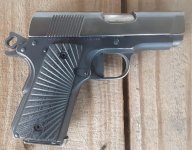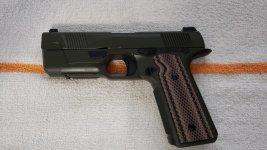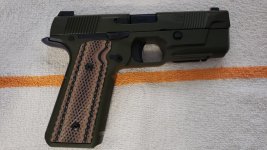MarkAlt
Member
I have a few Rock Island 1911s with a nice, but flat parkerized finish.
A handful of other brands that have some type of 'cote', mostly flat or just barely semi-gloss. ...not much sheen
I know the spray-on finishes can't compete with true bluing, and that's okay. I am looking for an inexpensive (possibly do-it-yourself) alternative that has a gloss finish. All of these guns are fun, range-shooters and see casual use.
Has anyone experimented with home finishing, or inexpensive coting companies that offer a little shine?
Photos and suggestions please?
A handful of other brands that have some type of 'cote', mostly flat or just barely semi-gloss. ...not much sheen
I know the spray-on finishes can't compete with true bluing, and that's okay. I am looking for an inexpensive (possibly do-it-yourself) alternative that has a gloss finish. All of these guns are fun, range-shooters and see casual use.
Has anyone experimented with home finishing, or inexpensive coting companies that offer a little shine?
Photos and suggestions please?






